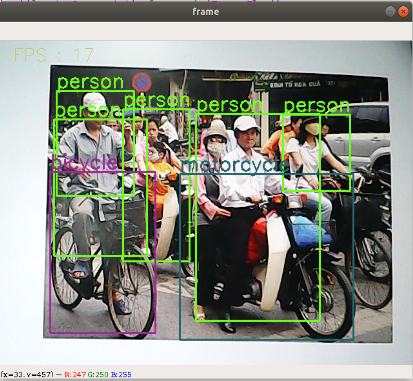5. OpenCV application
5. OpenCV application 5.1. Overview 5.2. QR code 5.2.1 Introduction of QR code 5.2.2 The structure of QR code 5.2.3. Features of QR code 5.2.4. QR code creation and recognition 5.3. Human Pose Estimation 5.3.1. Overview 5.3.2. Principle 5.3.3. Start 5.4, target detection 5.4.1. Model structure 5.4.2. code analysis 5.4.3. Start
5.1. Overview
OpenCV is a cross-platform computer vision and machine learning software library released under the BSD license (open source) and can run on Linux, Windows, Android and MacOS operating systems. [1] It is lightweight and efficient - it consists of a series of C functions and a small number of C++ classes, and provides interfaces in languages such as Python, Ruby, and MATLAB, and implements many general algorithms in image processing and computer vision.
5.2. QR code
5.2.1 Introduction of QR code
QR code is a kind of two-dimensional barcode. QR comes from the abbreviation of "Quick Response" in English, which means quick response. It comes from the inventor's hope that QR code can make its content quickly decoded. QR code not only has large information capacity, high reliability and low cost, but also can represent various text information such as Chinese characters and images. It has strong confidentiality and anti-counterfeiting and is very convenient to use. What's more, the QR code technology is open source.
5.2.2 The structure of QR code
| picture | Parse |
|---|---|
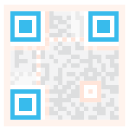 | Positioning markings indicate the direction of the QR code. |
 | Alignment markings If the QR code is large, these additional elements help with positioning. |
 | pattern With these lines, the scanner can identify how big the matrix is. |
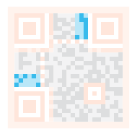 | Version information (Version information) here specifies the version number of the QR code in use. There are currently 40 different version numbers of the QR code. Version numbers for the sales industry are usually 1-7. |
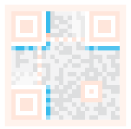 | Format information Format patterns contain information about fault tolerance and data mask patterns and make scanning codes easier. |
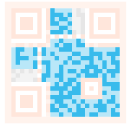 | Data and error correction keys These modes hold the actual data. |
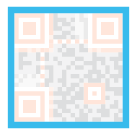 | Quiet zone This zone is very important for the scanner, its role is to separate itself from the surrounding. |
5.2.3. Features of QR code
The data values in the QR code contain duplicate information (redundant values). Therefore, even up to 30% of the QR code structure is destroyed without affecting the readability of the QR code. The storage space of the QR code is up to 7089 bits or 4296 characters, including punctuation marks and special characters, can be written into the QR code. In addition to numbers and characters, words and phrases (such as URLs) can also be encoded. As more data is added to the QR code, the code size increases and the code structure becomes more complex.
5.2.4. QR code creation and recognition
Source path: ~/yahboomcar_ws/src/yahboomcar_visual/simple_qrcode
Install
python3 -m pip install qrcode pyzbarsudo apt-get install libzbar-dev
- create
Create qrcode object
x'''参数含义:version:值为1~40的整数,控制二维码的大小(最小值是1,是个12×12的矩阵)。如果想让程序自动确定,将值设置为 None 并使用 fit 参数即可。error_correction:控制二维码的错误纠正功能。可取值下列4个常量。ERROR_CORRECT_L:大约7%或更少的错误能被纠正。ERROR_CORRECT_M(默认):大约15%或更少的错误能被纠正。ROR_CORRECT_H:大约30%或更少的错误能被纠正。box_size:控制二维码中每个小格子包含的像素数。border:控制边框(二维码与图片边界的距离)包含的格子数(默认为4,是相关标准规定的最小值)'''qr = qrcode.QRCode( version=1, error_correction=qrcode.constants.ERROR_CORRECT_H, box_size=5, border=4,)
qrcode QR code to add logo
x# If the logo address exists, add the logo imagemy_file = Path(logo_path)if my_file.is_file(): img = add_logo(img, logo_path)
Note: When using Chinese, you need to add Chinese characters
xxxxxxxxxxJust use the python3 + py file to execute, then enter the content to be generated, and press Enter to confirm.
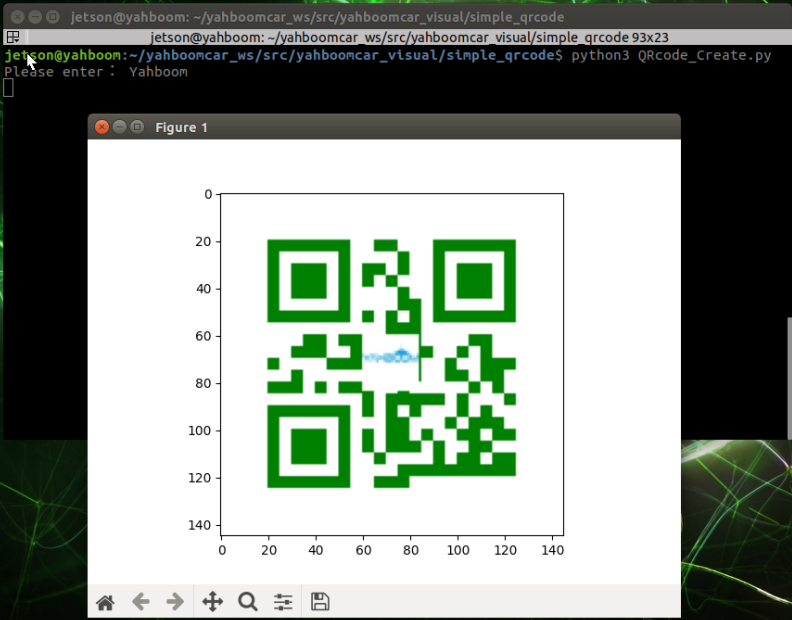
- Identify
def decodeDisplay ( image , font_path ): gray = cv . cvtColor ( image , cv . COLOR_BGR2GRAY ) # You need to convert the output Chinese characters into Unicode encoding first barcodes = pyzbar . decode ( gray ) for barcode in barcodes : # Extract the position of the bounding box of the QR code ( x , y , w , h ) = barcode . rect # draw the bounding box of the barcode in the image cv . rectangle ( image , ( x , y ), ( x + w , y + h ), ( 225 , 0 , 0 ), 5 ) encoding = 'UTF-8' # To draw it, you need to convert it to a string first barcodeData = barcode . data . decode ( encoding ) barcodeType = barcode . type # Plot the data and type on the image pilimg = Image . fromarray ( image ) # create brush draw = ImageDraw . Draw ( pilimg ) # Parameter 1: font file path, parameter 2: font size fontStyle = ImageFont . truetype ( font_path , size = 12 , encoding = encoding ) # Parameter 1: print coordinates, parameter 2: text, parameter 3: font color, parameter 4: font draw . text (( x , y - 25 ), str ( barcode . data , encoding ), fill =( 255 , 0 , 0 ), font = fontStyle ) # PIL image to cv2 image image = cv . cvtColor ( np . array ( pilimg ), cv . COLOR_RGB2BGR ) # Print barcode data and barcode type to terminal print ( "[INFO] Found {} barcode: {}" . format ( barcodeType , barcodeData )) return image - Effect demonstration
xxxxxxxxxxJust use python3 + py file to execute it
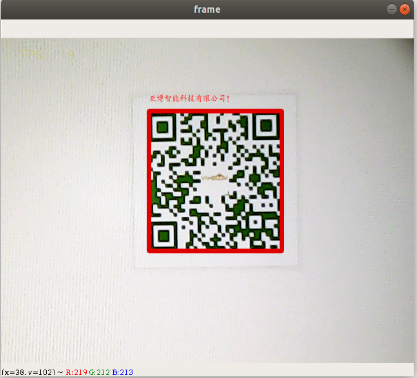
5.3. Human Pose Estimation
Source path: ~/yahboomcar_ws/src/yahboomcar_visual/detection
5.3.1. Overview
Human Posture Estimation (Human Posture Estimation) is to estimate the human posture by correctly linking the detected human key points in the picture. The key points of the human body usually correspond to joints with a certain degree of freedom on the human body, such as neck, shoulder, elbow, wrist, waist, knee, ankle, etc., as shown in the figure below.
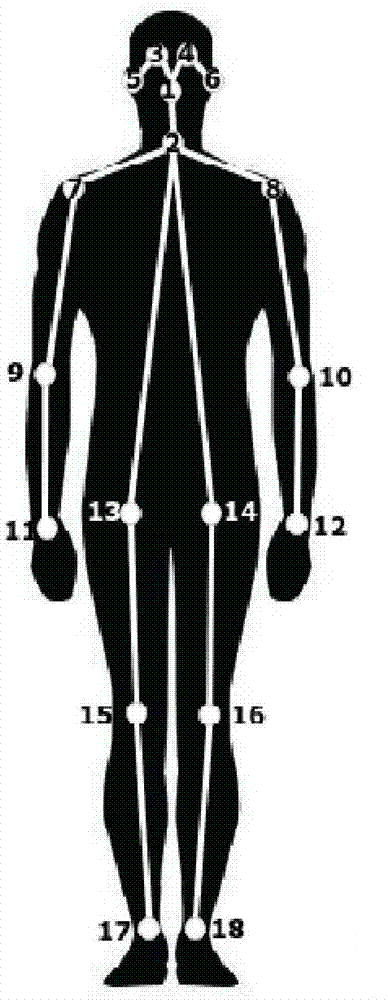
5.3.2. Principle

Input an image, extract features through a convolutional network, and obtain a set of feature maps, which are then divided into two forks, and use the CNN network to extract Part Confidence Maps and Part Affinity Fields respectively; after obtaining these two information, we use the graph theory in Bipartite Matching (even matching) Find the Part Association, connect the joint points of the same person, due to the vector nature of the PAF itself, the resulting bipartite matching is very correct, and finally merged into the overall skeleton of a person; Finally, based on PAFs, Multi- Person Parsing—>Convert the Multi-person parsing problem into a graphs problem—>Hungarian Algorithm (Hungarian Algorithm) (The Hungarian algorithm is the most common algorithm for partial graph matching. The core of the algorithm is to find an augmentation path. An algorithm for finding the maximum matching of a bipartite graph with a wide path.)
5.3.3. Start
xxxxxxxxxxcd ~/yahboomcar_ws/src/yahboomcar_visual/detectionpython target_detection.py
After clicking on the image box, use the keyboard [f] key to toggle target detection.
xxxxxxxxxxif action == ord ( 'f' ) or action == ord ( 'F' ): state = not state # function switch
input image

output image

5.4, target detection
The main problem in this section is how to use the dnn module in OpenCV to import a trained target detection network. But there are requirements for the version of opencv.
At present, there are three main methods for target detection using deep learning:
- Faster R-CNNs
- You Only Look Once(YOLO)
- Single Shot Detectors(SSDs)
Faster R-CNNs are the most commonly heard of deep learning based neural networks. However, this approach is technically difficult to understand (especially for deep learning newbies), difficult to implement, and difficult to train.
In addition, even using the "Faster" method to implement R-CNNs (where R stands for Region Proposal), the algorithm is still relatively slow, about 7FPS.
If we are after speed, we can turn to YOLO, because it is very fast, can reach 40-90 FPS on TianXGPU, and the fastest version may reach 155 FPS. But the problem with YOLO is that its accuracy has yet to be improved.
SSDs were originally developed by Google and can be said to be a balance between the above two. Compared to Faster R-CNNs, its algorithm is more straightforward. Compared with YOLO, it is more accurate.
5.4.1. Model structure
The main work of MobileNet is to replace the past standard convolutions (standard convolutions) with depthwise sparable convolutions (depth-level separable convolutions) to solve the problems of computational efficiency and parameter size of convolutional networks. The MobileNets model is based on depthwise sparable convolutions (depth-level separable convolutions), which can decompose standard convolutions into a depthwise convolution and a point convolution (1 × 1 convolution kernel). Depthwise convolution applies each kernel to each channel, while 1 × 1 convolution is used to combine the outputs of channel convolutions.
Batch Normalization (BN) is added to the basic components of MobileNet, that is, at each SGD (stochastic gradient descent), the standardization process is performed so that the mean of the result (each dimension of the output signal) is 0 and the variance is 1. Generally, you can try BN to solve the problem that the convergence speed is very slow or the gradient explosion cannot be trained during the training of the neural network. In addition, in general use cases, BN can also be added to speed up the training speed and improve the model accuracy.
In addition, the model also uses the ReLU activation function, so the basic structure of the depthwise separable convolution is shown in the following figure:
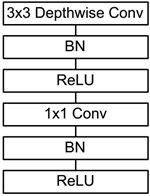
The MobileNets network is composed of many depthwise separable convolutions shown above. Its specific network structure is shown in the following figure:
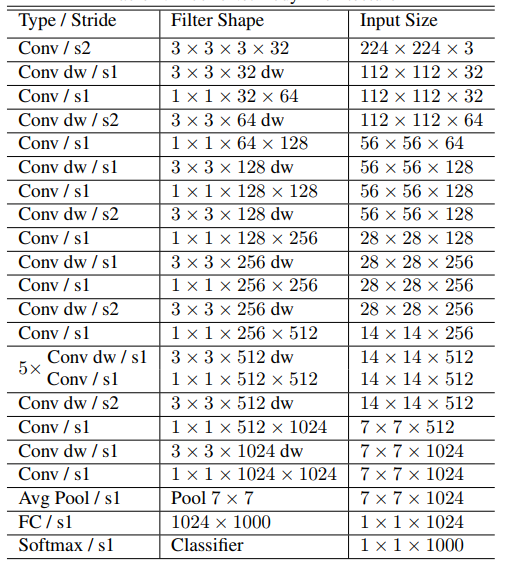
5.4.2. code analysis
List of recognized objects
x[person, bicycle, car, motorcycle, airplane, bus, train,truck, boat, traffic light, fire hydrant, street sign,stop sign, parking meter, bench, bird, cat, dog, horse,sheep, cow, elephant, bear, zebra, giraffe, hat, backpack,umbrella, shoe, eye glasses, handbag, tie, suitcase,frisbee, skis, snowboard, sports ball, kite, baseball bat,baseball glove, skateboard, surfboard, tennis racket,bottle, plate, wine glass, cup, fork, knife, spoon, bowl,banana, apple, sandwich, orange, broccoli, carrot, hot dog,pizza, donut, cake, chair, couch, potted plant, bed, mirror,dining table, window, desk, toilet, door, tv, laptop, mouse,remote, keyboard, cell phone, microwave, oven, toaster,sink, refrigerator, blender, book, clock, vase, scissors,teddy bear, hair drier, toothbrush]
Load the category [object_detection_coco.txt], import the model [frozen_inference_graph.pb], and specify the deep learning framework [TensorFlow]
with open('object_detection_coco.txt', 'r') as f: class_names = f.read().split('\n')COLORS = np.random.uniform(0, 255, size=(len(class_names), 3))model = cv.dnn.readNet(model='frozen_inference_graph.pb', config='ssd_mobilenet_v2_coco.txt', framework='TensorFlow')Import the image, extract the height and width, calculate the 300x300 pixel blob, and pass this blob into the neural network
def Target_Detection ( image ): image_height , image_width , _ = image . shape # create blob from image blob = cv . dnn . blobFromImage ( image = image , size =( 300 , 300 ), mean =( 104 , 117 , 123 ), swapRB = True ) model . setInput ( blob ) output = model . forward () # iterate over each detection for detection in output [ 0 , 0 , :, :]: # Extract the confidence of the detection confidence = detection [ 2 ] # Draw bounding box only if detection confidence is above a certain threshold, skip otherwise if confidence > .4 : # Get the class ID class_id = detection [ 1 ] # map class id to class class_name = class_names [ int ( class_id ) - 1 ] color = COLORS [ int ( class_id )] # Get bounding box coordinates box_x = detection [ 3 ] * image_width box_y = detection [ 4 ] * image_height # Get the width and height of the bounding box box_width = detection [ 5 ] * image_width box_height = detection [ 6 ] * image_height # draw a rectangle around each detected object cv . rectangle ( image , ( int ( box_x ), int ( box_y )), ( int ( box_width ), int ( box_height )), color , thickness = 2 ) # Write the class name text on the detected object cv . putText ( image , class_name , ( int ( box_x ), int ( box_y - 5 )), cv . FONT_HERSHEY_SIMPLEX , 1 , color , 2 ) return image 5.4.3. Start
xxxxxxxxxxcd ~/yahboomcar_ws/src/yahboomcar_visual/detectionpython target_detection.py
After clicking the image frame, use the keyboard [f] key to switch the human pose estimation.
xif action == ord('f') or action == ord('F'):state = not state # function switch
